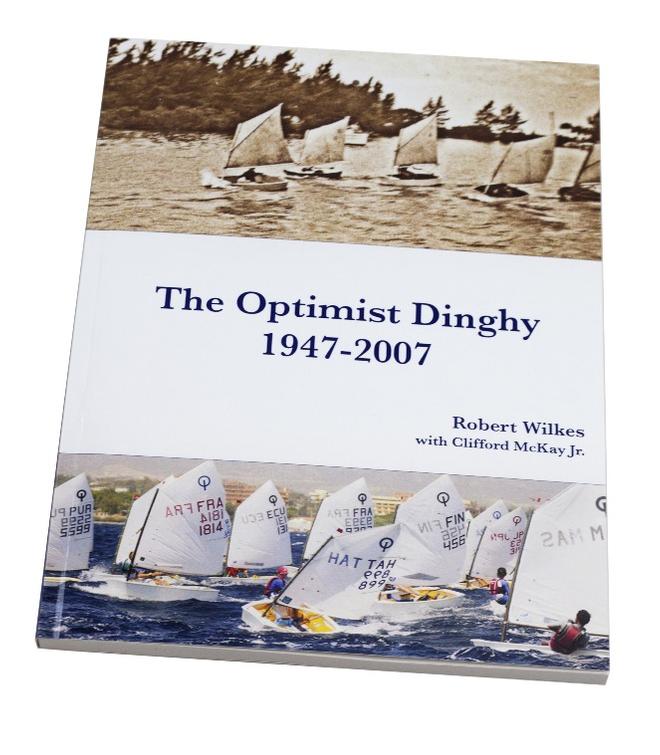The history of the Optimist Dinghy
by Optiparts on 24 Feb 2015

The Paperback 'The Optimist Dinghy' - The History optiparts
The 130-page history, illustrated by almost as many photos, the majority in colour, tells the story of how an 'Orange Crate' from the creeks of Florida came to become the junior dinghy used in over 120 countries and the first boat of over 80% of Olympic boat skippers.
It recounts the origins of the Optimist dinghy in the initiative in 1947 of Major Cliff McKay from Clearwater in Florida who linked his 11-year old son's love of sailing with the popular soapbox car racing of the time. He envisaged a soapbox sailboat, contacted local boatbuilder Clark Mills and got sponsorship from the Optimist youth service club. Clark's basic design proved so brilliant that it is still recognisable in its descendent today.
This part of the history is written by the Major's son Clifford McKay Jr. who was, literally, the first boy to sail the Optimist - he sailed Clark Mills' prototype. Sixty-plus years later he has researched family archives and the local newspapers of the time to place on record what really happened and why. A mythology had grown up, inevitably distorting the legendary events, and it was Cliff's mission to set the record straight. It appears as an 18-page supplement to the history with some fabulous photos of the early days and a copy of the first Optimist Rules.
The story is taken up by Robert Wilkes who worked with the Optimist Class for over 35 years and as recently retired Class secretary had access to its archives. Chapters 2 and 3 of the History relate how the Optimist spread from its Florida base first to Denmark where the rig and fittings were substantially modified and on to the rest of Scandinavia and beyond. It details how the first 'International Optimist Regatta' was held in England in 1962 with three countries participating and how that number rose to fourteen by the end of the decade with the foundation of the International Optimist Dinghy Association (IODA) in 1965. Founding president Viggo Jacobsen is described guiding the Class through the difficult days of the introduction of GRP glass-fibre hulls, negotiating with the International Yacht Racing Union and overseeing expansion covering all six continents to give 47 national fleets by the time he retired in 1981.
The 1980s, largely overseen by Viggo's successor Al Chandler, saw the rebirth of the equipment in a format very similar to today's. A single-skin hull was matched by high-quality spars and increasingly specialised sails. Charter boats became available at IODA championships. An open European championship was created to satisfy some of the ever-growing demand for international competition and IODA embraced team racing.
The final part of the History records the further progress, with the Class almost doubling geographical spread and championship participation, under presidents Helen Mary Wilkes and René Kluin. Asian, African and Oceanian championships were created, massive growth was recorded in the USA, China and elsewhere, and stricter control of equipment boosted production at low cost in over twenty countries. It documents the changes resulting from better clothing, the internet revolution, lower-cost airfares and universally available charter.
Throughout the book there are glimpses of the early days of many of sailing's great heroes, from Ed Baird and Jochen Schümann through Ben Ainslie and Iker Martinez to Xu Lijia. The rise in the number and placing of girl sailors is examined together with their later successes at Olympic level, including how Lisa Westerhof became only the second girl to win the Optimist Worlds and to go on to medal at the 2012 Olympics.
Young people tend to ask why things are the way they are. This history gives the answer for their beloved little boat.
More information
here.
If you want to link to this article then please use this URL: www.sail-world.com/131829